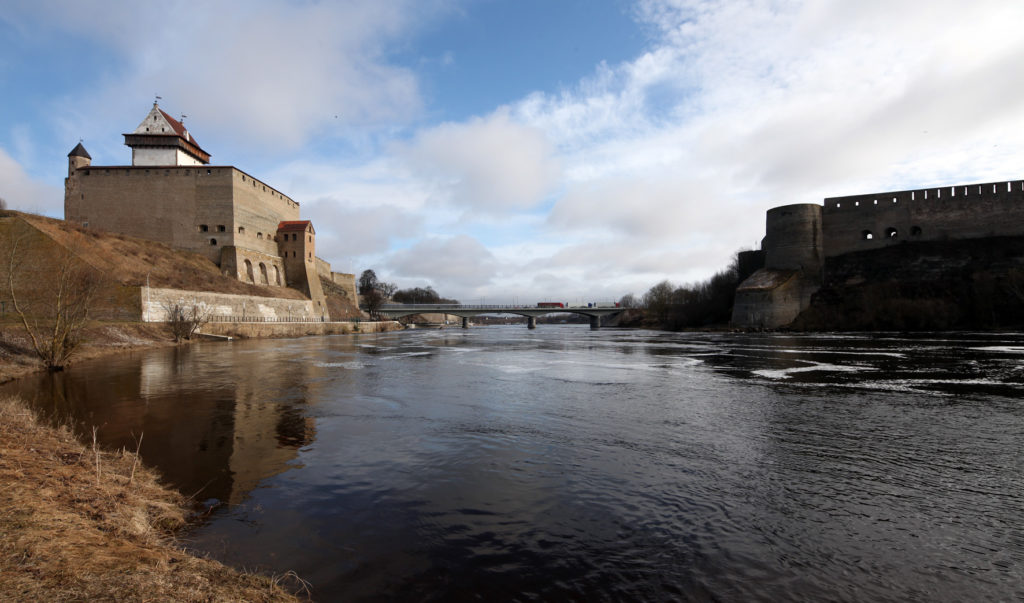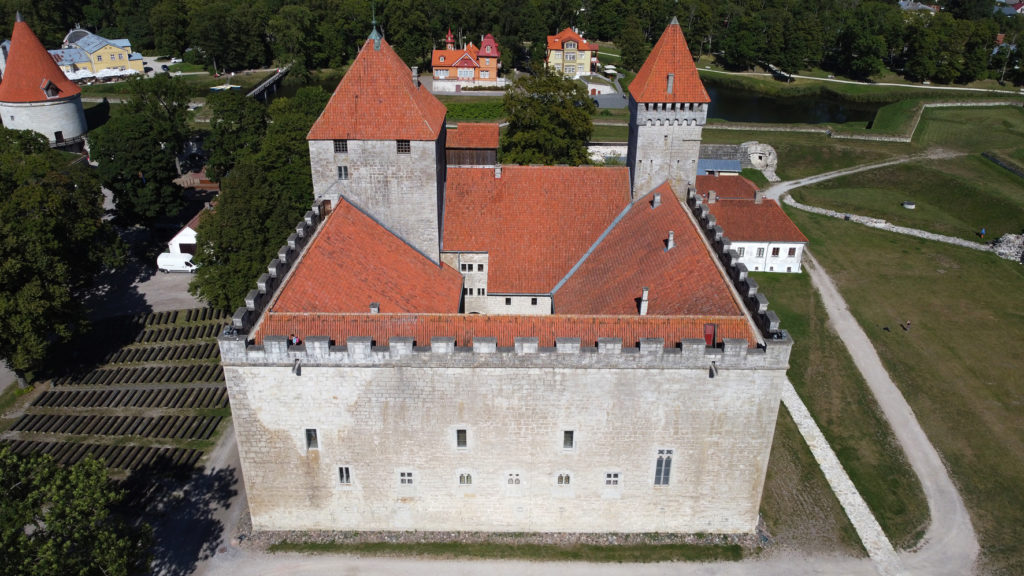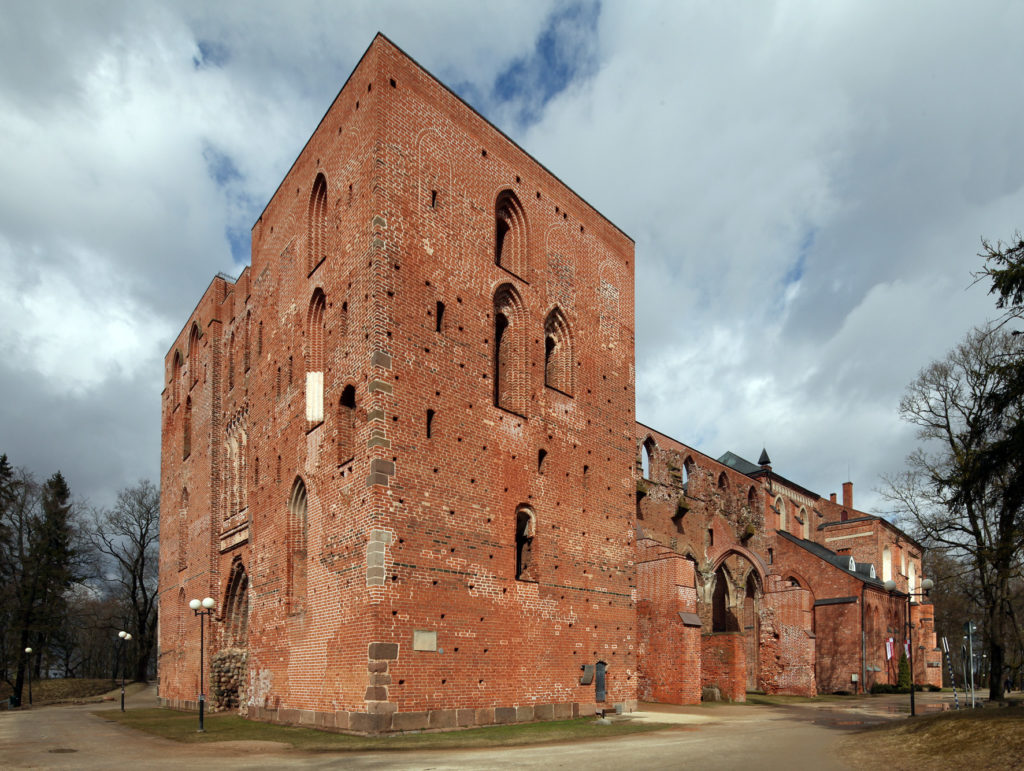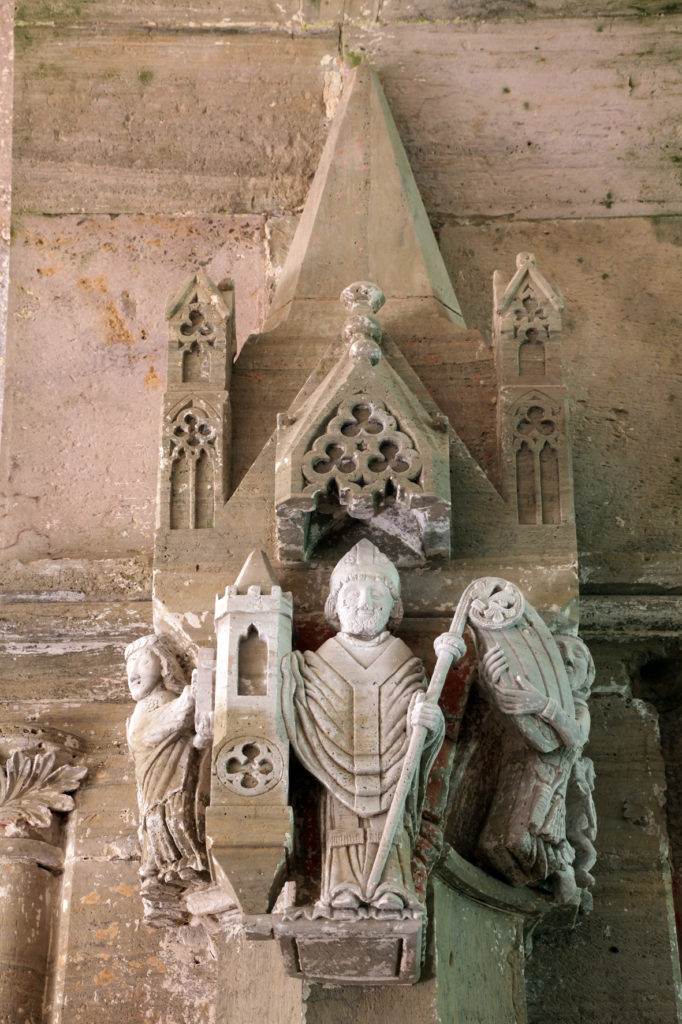Medieval architecture in Livonia
What is Livonia?
Historical Livonia covered the territories of today´s states of Estonia and Latvia. Between the 13th and mid-16th centuries there existed a community of Livonian dominions on these territories which was unique in Europe. From the 1180s on, the conquest, Christianisation and feudalization of the country was realised by Christian crusaders of North German and Danish origin. In the course of this there developed a constellation of clerical sovereignties, the Livonian branch of the Teutonic Order (Schwertbrüder – Brethren of the Sword until 1237) being the biggest one. Then there were four territories of the Livonian bishops, headed by the Archbishop of Riga as the most powerful representative of this constellation (apart from the territories of the Bishoprics of Courland, Dorpat/Tartu and Ösel-Wiek). Riga, being the biggest city of the country, had a special position and for some time was even a comparably autonomous city state. However, later it became dependent on the Teutonic Order. Almost all power positions in the country were held by German knights, noblemen, clerics or citizens who were also those to have the fortifications and sacral buildings built.
The northern part of Livonia had been conquered by Denmark in 1219; the victorious battle of Lyndanisse which, as the legend has it, was decided by God granting the Danebrog flag to the Danish army, is a crucial element of Denmark´s national myth. Danish rule was maintained until 1346 and came to an end (due to a revolt by the Estonians in 1343) with selling the territory to the Teutonic Order. The rural population – and thus the great majority of the inhabitants of Livonia – consisted of native Estonians, Latvians, Livonians, Cours and Semgallians whose legal position was much limited.
The community of Livonian dominions came to its end as the result of a war against Russia which broke out in 1558. By decision of the sovereigns and estates of 1561, the northern parts of the country came to Sweden and the southern ones to Poland. Seen in the European context, Livonia marked the border region to Orthodox Russia. It was there were Western and Eastern Christianity encountered, a border between different systems which – in the form of the external border of the European Union – exists still today. This border situation is architecturally symbolised by the threatening entity of two castles immediately facing each other at Narva and Ivangorod, still an impressive view.
Fig. 1 “Livonia in the Middle Ages”: Ronald Preuss, 2009, Wikimedia, CC BY-SA 2.5
Medieval architecture in Livonia
In the period of the community of Livonian dominions there developed a remarkable and complex architectural landscape in the region, reflecting the particularities of an Eastern border region of occidental Christianity. In the Middle Ages one erected castles, churches as well as small towns and big cities, initially importing their models from several, mostly German, regions. In particular connections to Westphalia, Saxony, Lübeck/Mecklenburg and the Prussian territory of the Teutonic Order become obvious. In the 14th and 15th centuries we know about several builders from other Hanseatic cities in the Baltic region (such as Rostock) who were working in Livonia. This indicates the great significance of the Hanseatic League for transfer in the realm of architecture. Also the island of Gotland in the Baltic Sea played an important role as a mediator for the transfer of designs and technology. In the course of time there developed building traditions which were typical for the country and provided Livonian architecture with its specific features.
Due to `mission by the sword´ and the country´s location immediately on the borders to Russian and Lithuanian territories, defensive architecture was of particular importance, as acts of war were common. The entire country was covered by a network of castles of different functions (residents, seats of authorities, supply or border castles), part of which were closely related to the monastery-like type of the Prussian convent castles of the Teutonic Order.
Of outstanding significance for the early church architecture in the country was the late-Romanesque Cathedral of Riga, the first monumental red-brick building in an area of several hundreds of kilometres. Then there were the other Livonian cathedrals as well as some considerable city churches (most of all in Reval/Tallinn, Riga, Dorpat/Tartu) and monasteries. Apart from urban large-scale architecture, a number of parish churches were built in the rural regions, whose architecture was often very simple. However, we also find some sacral buildings of remarkable quality, with rich architectural sculpture, such as on the island of Ösel/Saaremaa. As concerns the building materials, there are clear regional differences. Apart from the regions which were most of all characterised by red-brick architecture, there are also some regions which were dominated by cut stone architecture (depending on local resources of natural stone).










